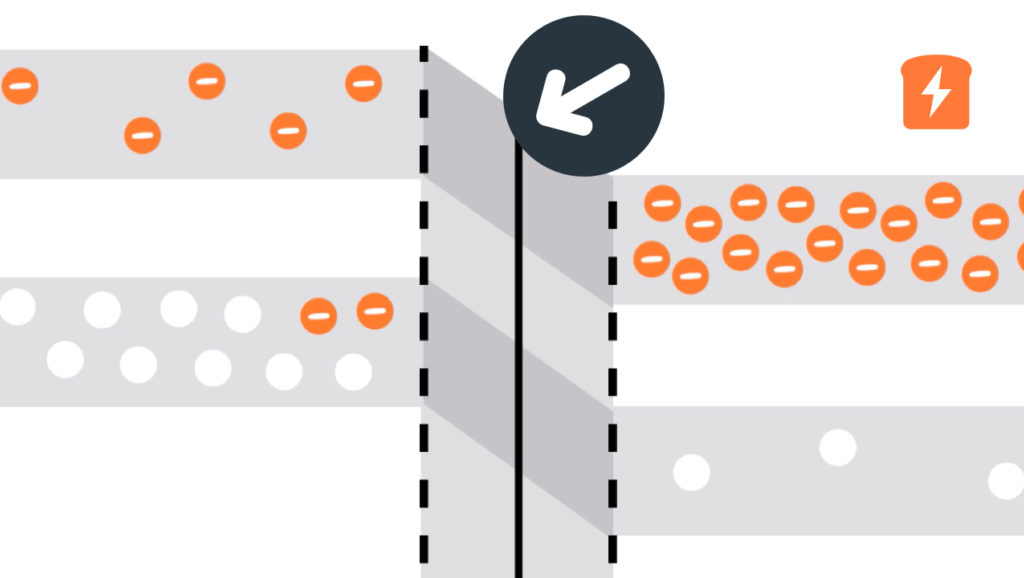Charge Carriers
With semiconductors, for modelling purposes, it makes sense to use both electrons and the lack of electrons (holes) to model how current flows. So, as sometimes you use electrons and sometimes you use holes, it’s easier to just refer to both of them as “charge carriers” or even “current carriers” and move on with life.
In physics, a charge carrier is a particle or quasiparticle that is free to move, carrying an electric charge, especially the particles that carry electric charges in electrical conductors. Examples are electrons, ions and holes. In a conducting medium, an electric field can exert force on these free particles, causing a net motion of the particles through the medium; this is what constitutes an electric current. In conducting media, particles serve to carry charge:
- In many metals, the charge carriers are electrons. One or two of the valence electrons from each atom is able to move about freely within the crystal structure of the metal. The free electrons are referred to as conduction electrons, and the cloud of free electrons is called a Fermi gas. Many metals have electron and hole bands. In some, the majority carriers are holes.
- In electrolytes, such as salt water, the charge carriers are ions, which are atoms or molecules that have gained or lost electrons so they are electrically charged. Atoms that have gained electrons so they are negatively charged are called anions, atoms that have lost electrons so they are positively charged are called cations. Cations and anions of the dissociated liquid also serve as charge carriers in melted ionic solids (see e.g. the Hall–Héroult process for an example of electrolysis of a melted ionic solid). Proton conductors are electrolytic conductors employing positive hydrogen ions as carriers.
- In a plasma, an electrically charged gas which is found in electric arcs through air, neon signs, and the sun and stars, the electrons and cations of ionized gas act as charge carriers.
- In a vacuum, free electrons can act as charge carriers. In the electronic component known as the vacuum tube (also called valve), the mobile electron cloud is generated by a heated metal cathode, by a process called thermionic emission. When an electric field is applied strong enough to draw the electrons into a beam, this may be referred to as a cathode ray, and is the basis of the cathode ray tube display widely used in televisions and computer monitors until the 2000s.
- In semiconductors, which are the material used to make electronic components like transistors and integrated circuits, behave as if "effective particles" known as electron holes with positive charge move through them, causing electrical properties. The "holes" behave as the traveling vacancies in the valence-band electron population of the semi-conductor and are treated as charge carriers. Electrons and holes are the charge carriers in semiconductors.
It can be seen that in some conductors, such as ionic solutions and plasmas, there are positive and negative charge carriers, so an electric current in them consists of the two polarities of carrier moving in opposite directions. In other conductors, such as metals, there are only charge carriers of one polarity, so an electric current in them just consists of charge carriers moving in one direction.









